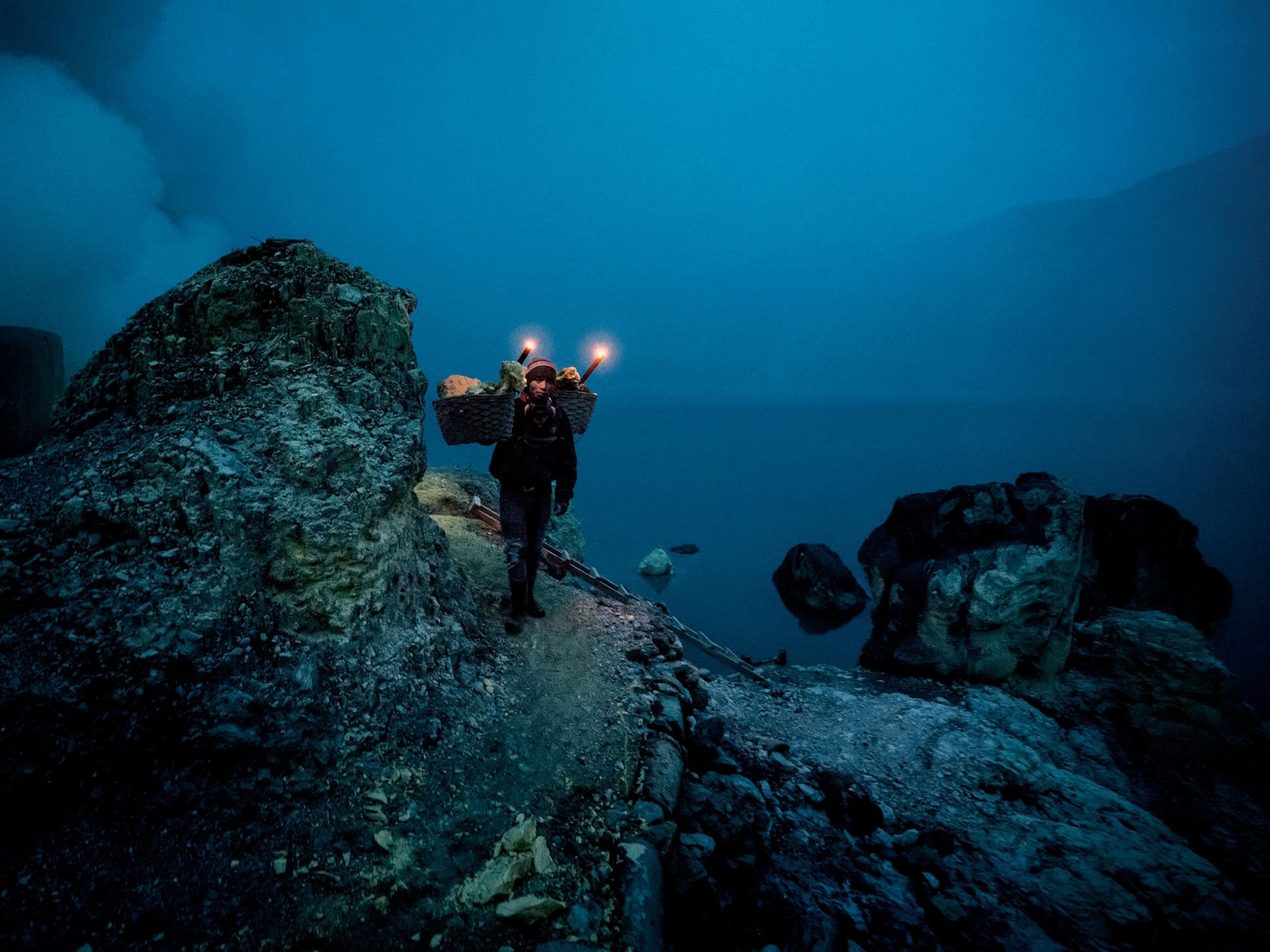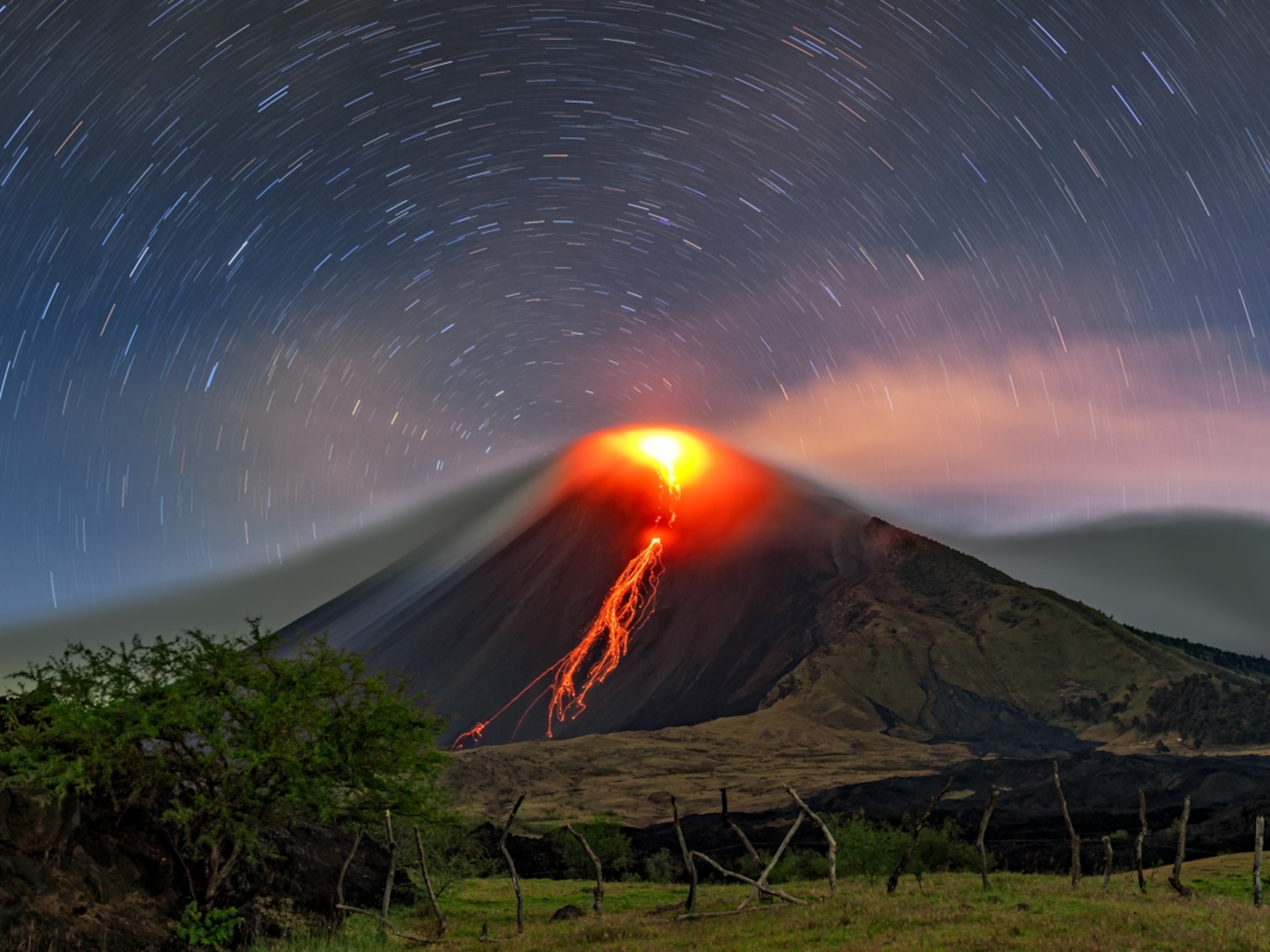
Why This Massive Mud Volcano Turned Deadly
The cause of the eruption is hotly debated, but a new study found that a tunnel of magma may have kept the site active for the past decade.
More than ten years ago, rivers of mud started spewing out of the ground in five different locations on the Indonesian island of Java. And it hasn’t stopped since.
The disaster, termed the Lusi mud eruption, is still spewing out mud and spans a little over six square miles. At its peak, the region was churning out over six million cubic feet of mud every day.
A study published in Marine and Petroleum Geology earlier this summer reviewed the extent of the damage. The scientists found that some villages have been buried in as much as 130 feet of relentless mud. Some 60,000 people have had to abandon their homes, and 13 people have been killed.
Now, a new study, published in the American Geophysical Union's Journal of Geophysical Research, purports to have found the source of this relentless flow of mud. A team of researchers from Norway, Switzerland, and Indonesia say the mud volcano hasn't stopped oozing because it's connected to a nearby volcanic system.
Understanding how Lusi happened can tell volcanologists quite a lot. In terms of geological formations, Lusi is a new-born, and thus allows scientists to understand how systems like volcanoes, hydrothermal vents, and geysers evolve.
What is a mud volcano, exactly?
Mud volcanoes and igneous (lava spewing) volcanoes often both appear in subduction zones, where two tectonic plates converge. Indonesia is home to one of the Earth's most active subduction zones. Hot magma that's less dense than the rocks around it is constantly rising to the surface and keeping the region's volcanoes active.
Conversely, mud volcanoes typically form when gases such as methane and carbon dioxide build up pressure that's released violently.
According to the paper, Lusi is both a mud volcano and a hydrothermal vent, a geological formation that releases gas.
Why has it lasted this long?
So what's going on under the Earth's surface that would cause millions of square feet of mud to ooze out for nearly 11 years? Researchers say the Arjuno-Welirang volcanic complex, a string of volcanoes in East Java, is to blame.
Researchers suspected this was the case because samples of the gas expelled by Lusi were similar to chemicals typically found in magma. For years before the eruption, the study claimed, magma from Arjuno-Welirang had been "baking" the sediment lying under Lusi and continuously building pressure.
Connections between Lusi and Arjuno-Welirang were also made by the researchers' use of tomography, a type of mapping technique that sends waves through solid objects to image three dimensional structures. Researchers laid out 31 seismometers, which measure ground shaking, and found that in the northernmost magma chamber of Arjuno-Welirang, there is a tunnel that feeds Lusi's sediment basin.
“What our new study shows is that the whole system was already existing there—everything was charged and ready to be triggered," said Adriano Mazzini, the study's lead author.
The study also has criticisms from researchers who don’t believe the data sufficiently shows the Arjuno-Welirang tunnels are linked to Lusi. Volcanologist Mark Tingay from the University of Adelaide said the researcher's data was not accurately checked against measured velocity data in the area and noted discrepancies with previous measurements.
"Also, the study does not compare its results to the far higher resolution images available from 2D petroleum industry reflection seismic surveys," said Tingay. He added that the additional surveys could have been used to compare and validate results, which is a useful tool in tomography because it can frequently produce errors.
What caused the eruption in the first place?
“It’s just a matter of reactivating or opening these faults, and whatever overpressure you have gathered in the subsurface will inevitably want to escape and come to the surface, and that is Lusi,” Mazzini said.
Exactly how the dangerous mudflow began has been debated heavily in the past decade. Scientists are pretty united in saying all this pressure generated by seismic activity, but there isn't a consensus on the exact origin of this activity.
One study released in 2007 in GSA Today claimed the deadly eruption was caused by an exploratory gas well that punctured high-pressure rock 9,300 feet below the surface.
In the Marine and Petroleum Geology study, which Mazzini also helped author, the team suggests a 6.3 magnitude earthquake that occurred several days prior miles aways from Lusi near the city of Yogykarta triggered the massive upwelling. It contradicts a study that Tingay helped author that argues an earthquake in the region would have yielded a significantly different geological effect.
Regardless of the exact cause, many studies show that Lusi shows no indication of stopping any time soon.
Note: This article has been updated with quotes from Mark Tingay and to clarify that the earthquake that occurred in the days leading up to Lusi was not directly under the eruption site.





